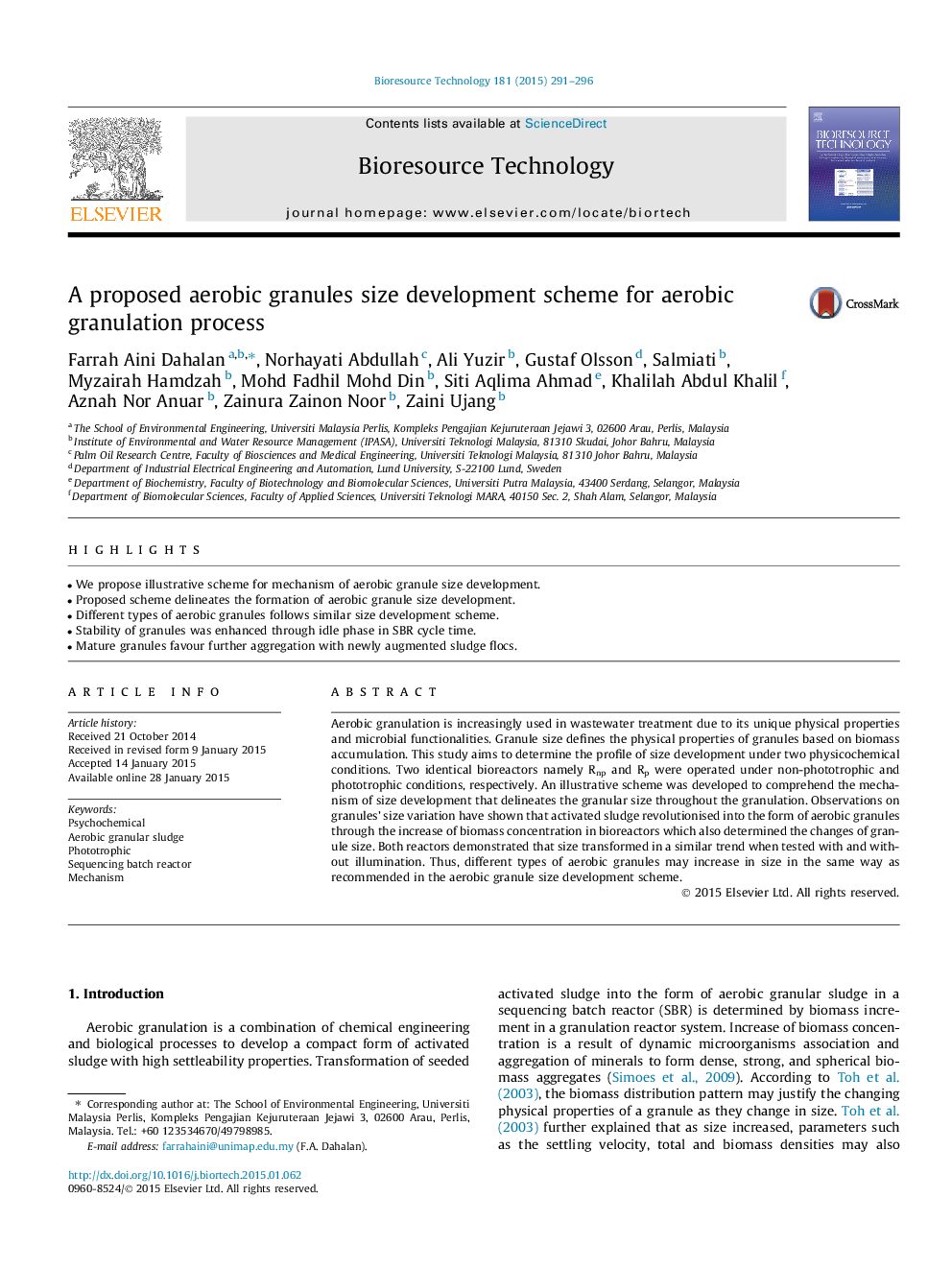| Article ID | Journal | Published Year | Pages | File Type |
|---|---|---|---|---|
| 680072 | Bioresource Technology | 2015 | 6 Pages |
•We propose illustrative scheme for mechanism of aerobic granule size development.•Proposed scheme delineates the formation of aerobic granule size development.•Different types of aerobic granules follows similar size development scheme.•Stability of granules was enhanced through idle phase in SBR cycle time.•Mature granules favour further aggregation with newly augmented sludge flocs.
Aerobic granulation is increasingly used in wastewater treatment due to its unique physical properties and microbial functionalities. Granule size defines the physical properties of granules based on biomass accumulation. This study aims to determine the profile of size development under two physicochemical conditions. Two identical bioreactors namely Rnp and Rp were operated under non-phototrophic and phototrophic conditions, respectively. An illustrative scheme was developed to comprehend the mechanism of size development that delineates the granular size throughout the granulation. Observations on granules’ size variation have shown that activated sludge revolutionised into the form of aerobic granules through the increase of biomass concentration in bioreactors which also determined the changes of granule size. Both reactors demonstrated that size transformed in a similar trend when tested with and without illumination. Thus, different types of aerobic granules may increase in size in the same way as recommended in the aerobic granule size development scheme.
